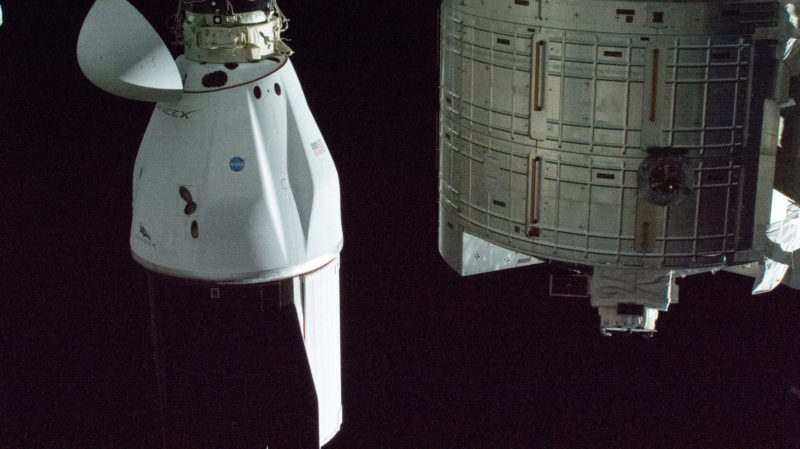
After almost six weeks in orbit, SpaceX’s CRS-21 Dragon spacecraft returned smoothly to Earth last night, wrapping up the second of up to seven U.S. uncrewed cargo missions to the International Space Station (ISS) planned for 2021.
Following a picture-perfect Tuesday morning departure from the sprawling orbital outpost—in which CRS-21 became the first U.S. Operational Segment (USOS) uncrewed supply ship to autonomously dock and undock, rather than “berth” and “unberth”—the pressurized capsule of Dragon, laden with more than 4,400 pounds (2,000 kg) of research equipment and critical scientific data results, returned to a parachute-aided splashdown just off the Florida coastline, to the west of Tampa, at 8:26 p.m. EST Wednesday.
From the instant of liftoff atop a previously-flown SpaceX Falcon 9 booster from historic Pad 39A at the Kennedy Space Center (KSC) in Florida on the morning of 6 December to last night’s splashdown, the CRS-21 mission spanned more than 38 days, of which over 35 days had been spent physically docked to the ISS. And “docked” was the name of the game for this mission, for CRS-21 marked the first flight by the cargo-carrying variant of Crew Dragon under the second-phase Commercial Resupply Services (CRS2) contract with NASA.
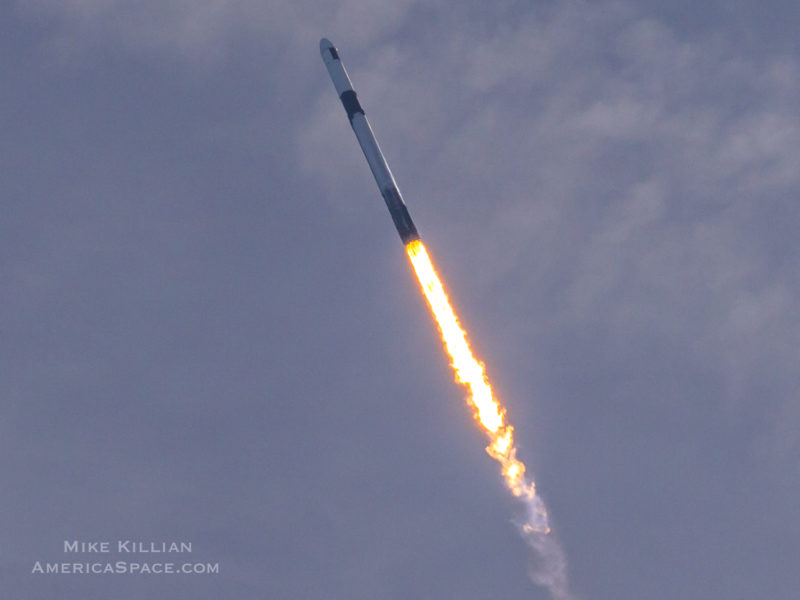
Unlike its CRS1 predecessors—which saw 20 Dragon visits between May 2012 and last March—the new-style CRS2 ships can dock autonomously at the Boeing-built International Docking Adapters (IDAs), rather than being robotically captured by means of the station’s 57.7-foot-long (17.6-meter) Canadarm2 and “berthed” to a Common Berthing Mechanism (CBM). This places correspondingly fewer demands upon crew labor and time.
As outlined earlier this week by AmericaSpace, CRS-21 established records not only for the first U.S. uncrewed cargo vehicle to dock autonomously with the ISS, but also for the shortest duration between launch and arrival on station. After lifting off on the morning of 6 December, it docked smoothly at the IDA-3 port a mere 26 hours later.
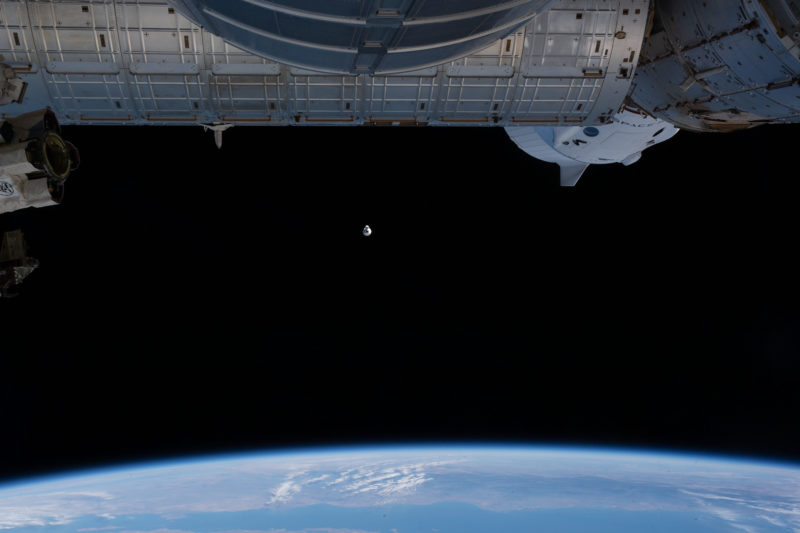
By comparison, previous CRS1-class Dragons typically followed a two-day rendezvous profile. After reloading the CRS-21 spacecraft with experiment results, return cargo and other “downmass”, original plans called for undocking on Monday morning, but this attempt was called off due to adverse weather conditions in the targeted splashdown zone off the coast of Daytona Beach, Fla.
A second attempt on Tuesday met with greater fortune and Dragon separated smoothly from IDA-3 at 9:05 a.m. EST, its progress away from the station closely monitored by Expedition 64 astronaut Victor Glover. It marked the first time that a spacecraft had undocked from IDA-3, which sits on the space-facing (or “zenith”) side of the Harmony node.
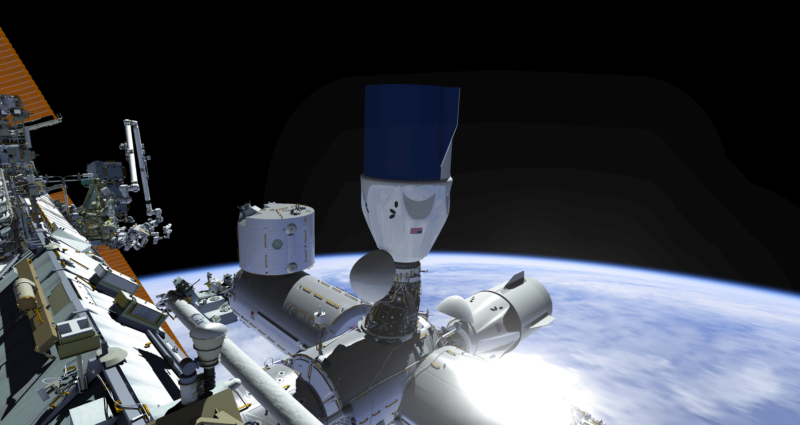
IDA-3 arrived at the station aboard the CRS-18 Dragon in July 2019 and was installed onto Harmony a few weeks later by a combination of robotic assets and the gloved hands of spacewalkers Nick Hague and Drew Morgan. The arrival of CRS-21 last month marked the first docking to the new port and Tuesday marked its first undocking.
After departing the ISS, Dragon executed a separation “burn” of its thrusters to maneuver itself to a safe distance, preparatory to re-entry into the atmosphere.
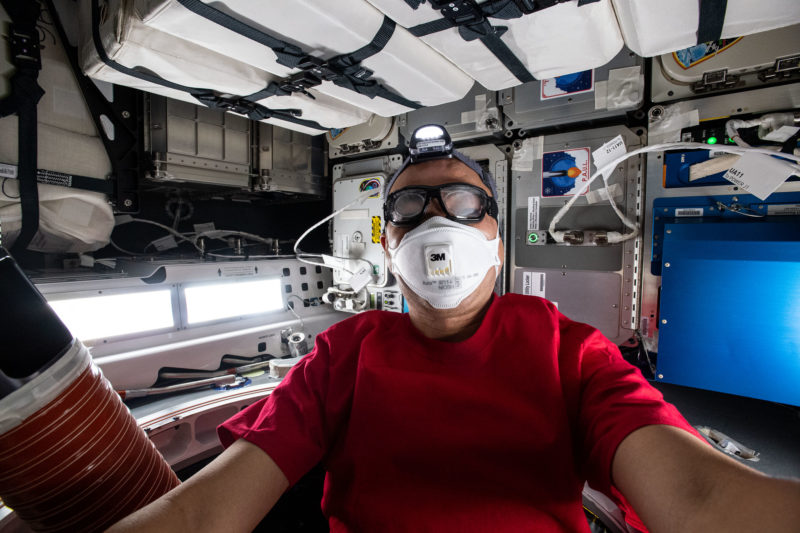
Following a smooth oceanic return at 8:26 p.m. EST Wednesday, the spacecraft was picked up by SpaceX’s GO Navigator vessel to begin its return to shore. Previous CRS1-class Dragons landed in the Pacific Ocean and their returning science cargoes were processed at SpaceX’s McGregor facility in Texas, ahead of transfer to NASA’s Johnson Space Center (JSC).
“Using the previous Dragon spacecraft, it could take up to 48 hours from the time the capsule hits the water in the Pacific Ocean for it to be back in Long Beach, California,” said KSC’s Research Integration Office utilization flight lead Mary Walsh. “We then started distributing those samples about four or five hours after that. Now we are going to have early return science in-hand and turn it over to researchers at just four to nine hours after splashdown.” This is expected to enable research teams to gather critical data with minimal losses of microgravity-induced effects.
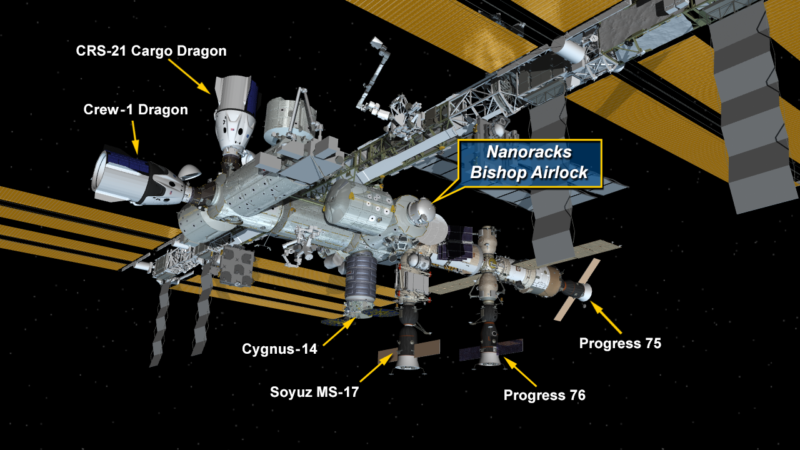
With CRS-21 and Northrop Grumman Corp.’s recently-departed NG-14 Cygnus cargo ship now gone, four vehicles—Dragon Resilience, the Progress MS-14 and MS-15 freighters and Soyuz MS-17—remain docked to the ISS.
The two Progresses are slated to depart later this spring, whilst Soyuz MS-17 will bring Expedition 64 crew members Sergei Ryzhikov, Sergei Kud-Sverchkov and Kate Rubins back to Earth in mid-April. A return date for Dragon Resilience and her Crew-1 team of Mike Hopkins, Victor Glover, Shannon Walker and Soichi Noguchi has yet to be determined, but is anticipated in early May.
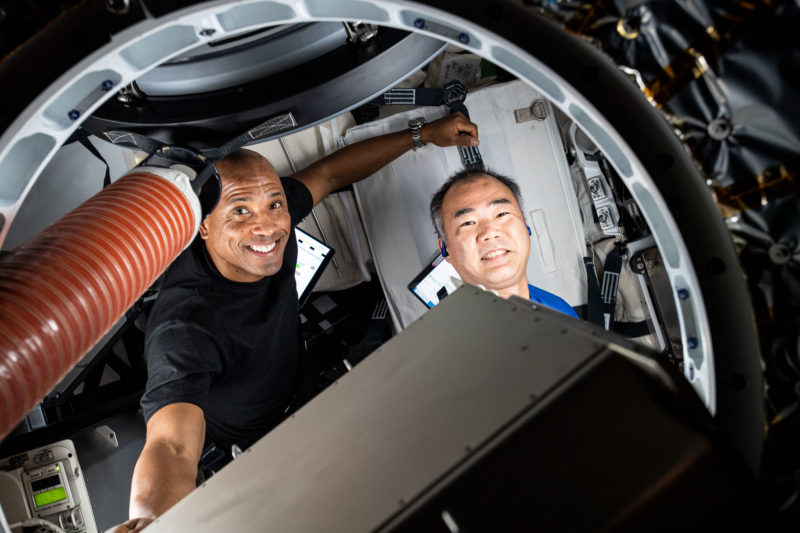
Upcoming this year are four more U.S. cargo ships, the first of which—Northrop Grumman’s NG-15 Cygnus—is targeted to launch from Pad 0A at the Mid-Atlantic Regional Spaceport (MARS) on Wallops Island, Va., at approximately 12:36 p.m. EST on 20 February. Final processing of the Cygnus is underway, with fueling set to occur over the weekend of 23-25 January. Following fueling, the spacecraft will be transferred to the Horizontal Integration Facility (HIF) at Wallops on the 27th, ahead of Initial Cargo Load of payloads beginning on 3 February.
Cygnus will be mated with the 133-foot-tall (40.5-meter) Antares 230+ booster on 10 February, with Late Cargo Load slated for the 13th. The payload fairing will be installed on Valentine’s Day, with rollout to Pad 0A on the 16th and Final Cargo Load shortly thereafter.
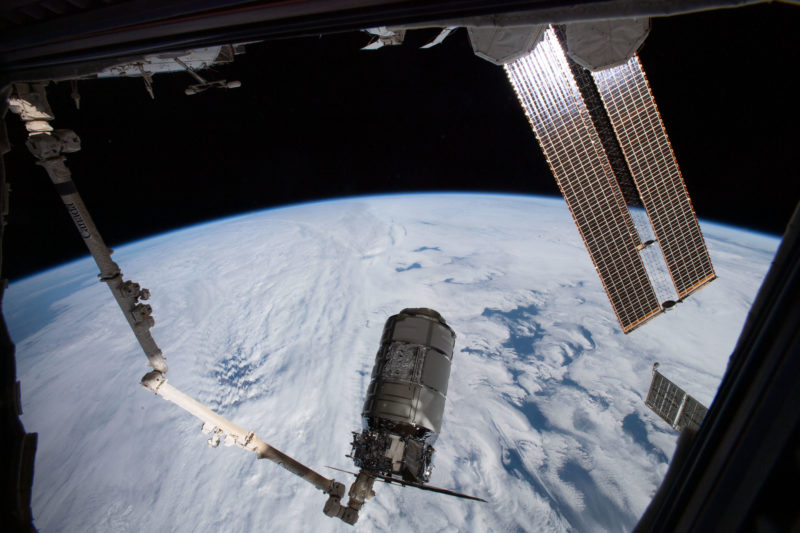
Assuming an on-time launch, Cygnus is expected to be robotically captured by Canadarm2 and berthed onto the Earth-facing (or “nadir”) port of the station’s Unity node on 22 February, where it will remain until the late April timeframe.
“The departure date is always subject to change, based on NASA’s needs for supporting disposal needs,” Northrop Grumman’s Vicki Cox told AmericaSpace. “The post-departure experiments for NG-15 are still being confirmed.” Beyond this next mission, the NG-16 Cygnus is presently slated to launch in July for another approximately two-month stay. Following the delivery of the first of three ISS Roll-Out Solar Array (iROSA) modification kits on NG-14, a second kit is reportedly “awaiting manifest” to fly on NG-16, with the third kit due to be delivered to NASA later this spring.
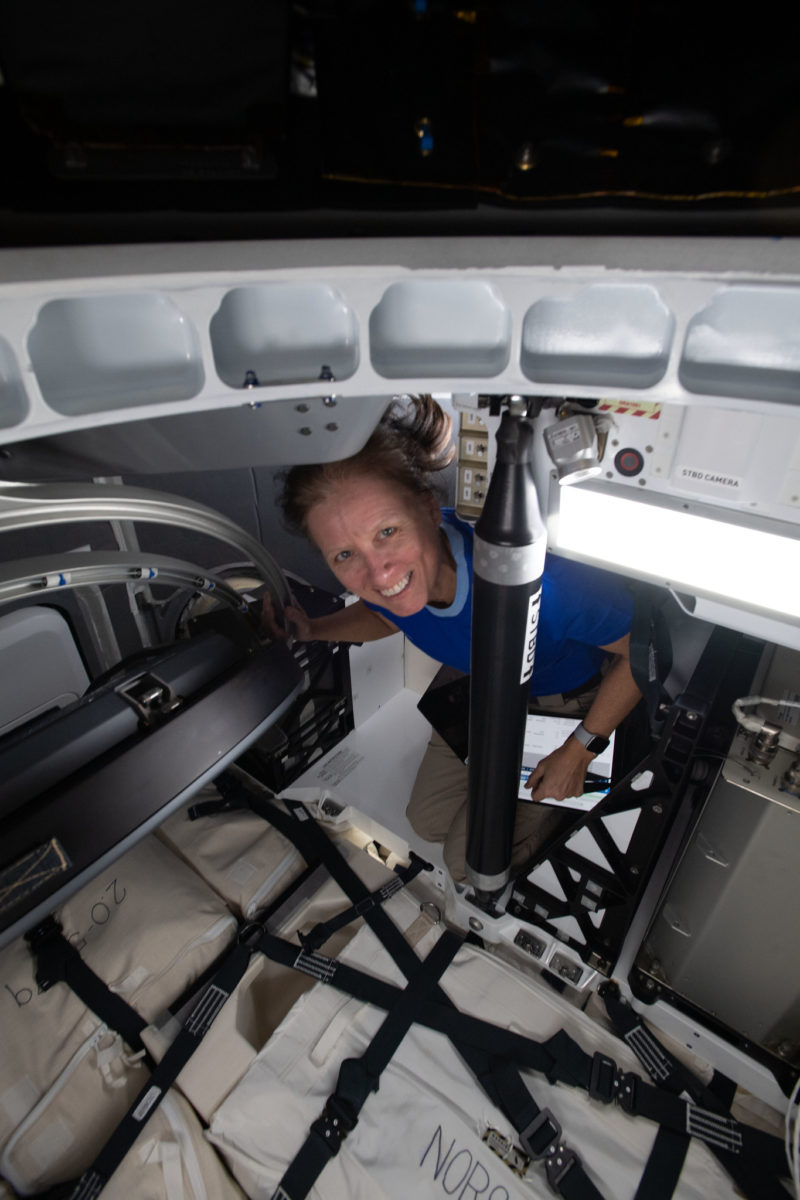
With Sierra Nevada Corp. (SNC) not expected to fly its first Dream Chaser cargo mission to the ISS until next year, 2021 will close out with as many as three Dragon flights in May, August and November. Payloads remain to be confirmed, although it is expected that the CRS-22 mission in May will include the first pair of ISS Roll-Out Solar Arrays (iROSAs) for installation onto the P-6 truss to augment the station’s power-generation capabilities.
In addition to these U.S. uncrewed visitors, three more Russian vehicles—Progress MS-16 in February, Progress MS-17 in June and Progress MS-18 in October—are expected to maintain a regular cadence of cargo supply for the station.




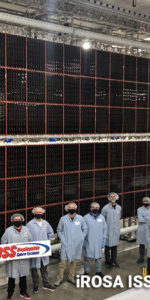
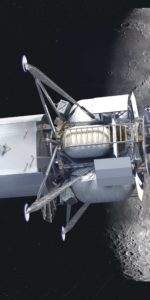
2 Comments
2 Pings & Trackbacks
Pingback:As CRS-22 Readies for Thursday Launch, SpaceX, AxiomSpace Plan for Four Missions Through 2023 « AmericaSpace
Pingback:As CRS-22 Readies for Thursday Launch, SpaceX, AxiomSpace Plan for Four Missions Through 2023